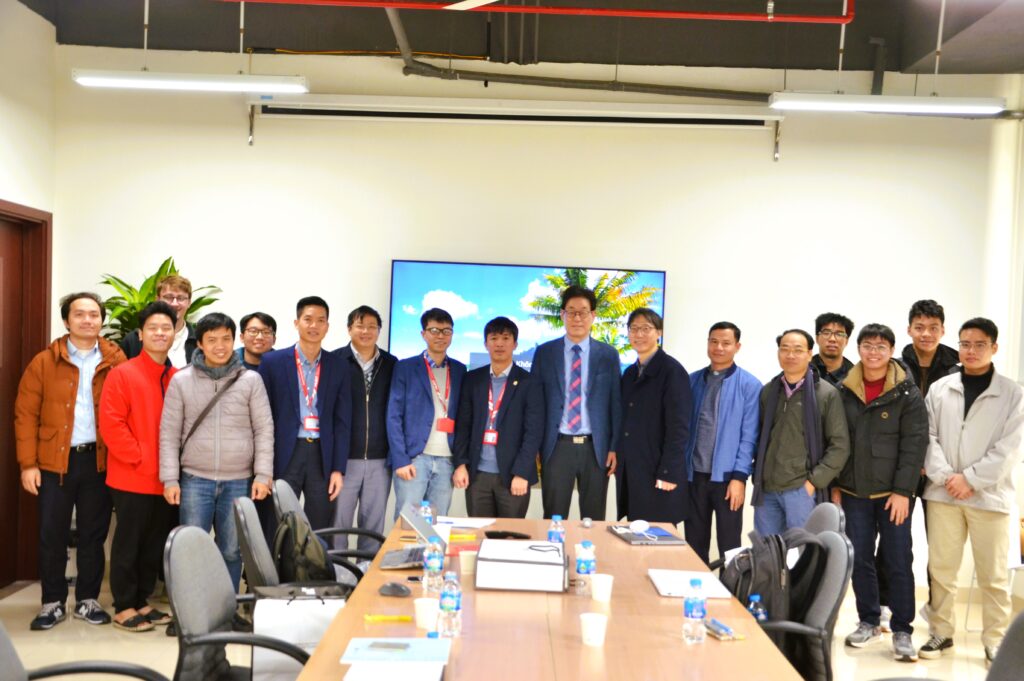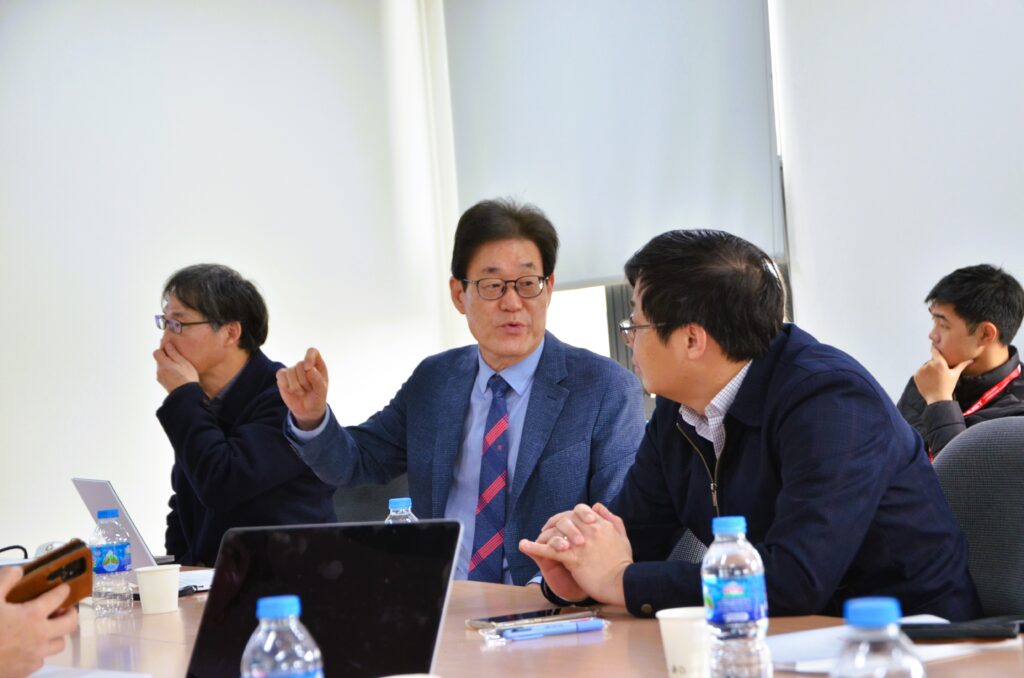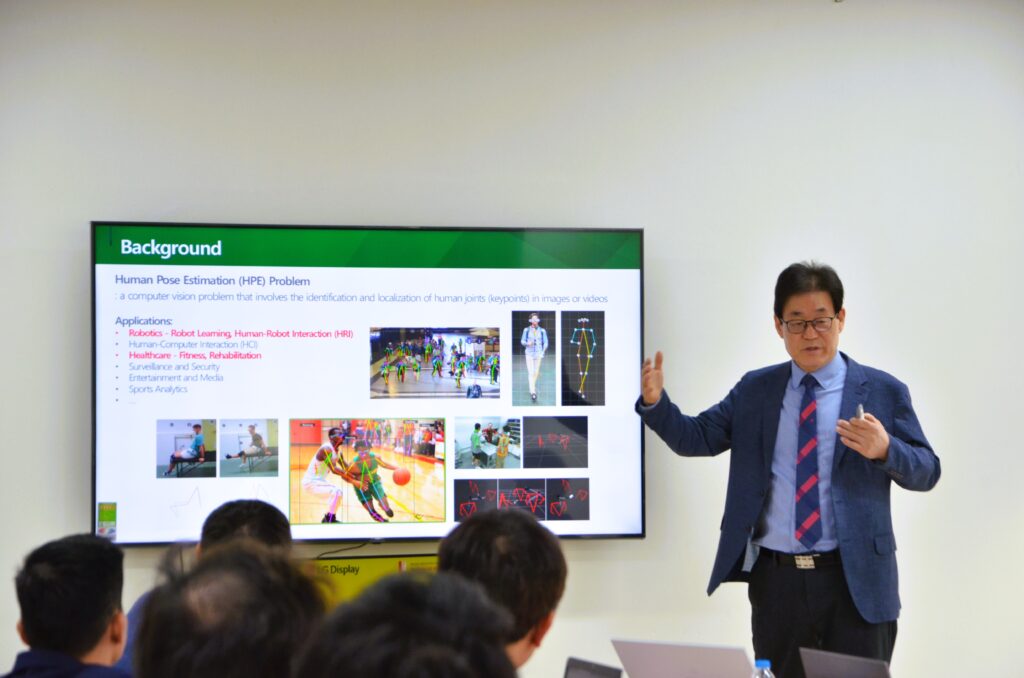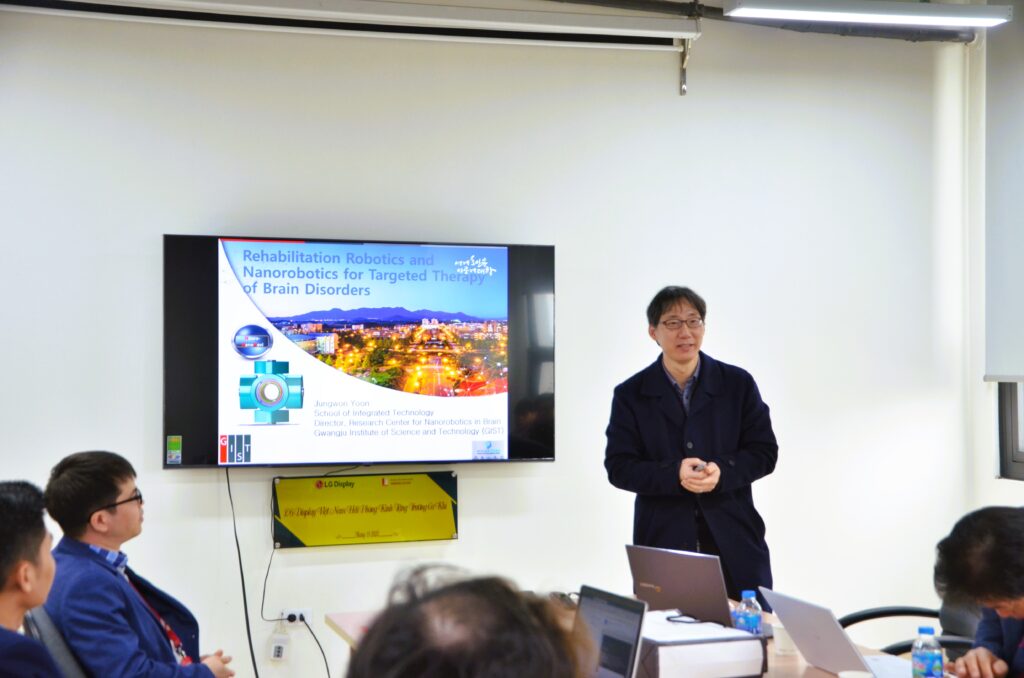Khởi đầu cho năm Giáp Thìn sẽ gặt hái được nhiều thành tích về nghiên cứu khoa học, ngày 1/3/2024 tại phòng C7-602M, trường Cơ khí đã tổ chức hội nghị nghiên cứu khoa học thường xuyên đầu tiên của năm.
Hội nghị có sự tham gia trình bày của hai giáo sư đến từ Khoa Công nghệ tích hợp (SIT), Viện Khoa học và Công nghệ Gwangju (Gwangju Institute of Science and Technology-GIST, trường được xếp hạng QS ~350, và hạng 4 QS citations/faculty), Hàn Quốc. Đây là dịp để các Thầy cô trường Cơ khí được giao lưu học hỏi và chia sẻ các định hướng nghiên cứu với các giáo sư đến từ Hàn Quốc.
Tại hội nghị, GS. Ryu – Trưởng khoa của SIT, thành viên hội đồng đánh giá quỹ NRF (National Research Foundation), từng là chủ tịch Korean Society of Haptics và hội ICROS, đã trình bày nội dung “AI Research Activities in Robotics RL Lab”, đây là những kết quả nghiên cứu của ông về AI tại Hàn Quốc.
GS. Jungwon Yoon đã trình bày về nội dung “Rehabilitation robotics and nanorobotics for targeted therapy of brain disorders” tại hội nghị. GS. Ryu và GS. Yoon tham gia biên tập viên (AE) cho IEEE/ASME Transactions on Mechatronics (Tmecha), IEEE Transactions on Haptics, và Frontiers in Robotics and AI.
Cũng tại hội nghị, hai giáo sư đã giới thiệu các chương trình học bổng Thạc sĩ, Tiến sĩ của Viện Khoa học và Công nghệ Gwangju cho các bạn sinh viên, học viên của trường Cơ khí. Đây là cơ hội cho các bạn sinh viên đang học tập tại trường có thể trao đổi với các giáo sư về những điều kiện để có thể trở thành nghiên cứu sinh của Viện, từ đó xây dựng các định hướng học tập trong tương lai.

Nội dung trình bày của hai giáo sư tại hội nghị:
Google Scholar Profile: https://scholar.google.com/citations?user=zHoKd10AAAAJ&hl=ko AI (Artificial Intelligence) is everywhere these days and will prevail everywhere, every time, everybody in all areas of our lives. Especially, we can see and experience AI in all machines and artificial creatures like robotic systems and metaverse. This means that we all engineers including mechanical and mechatronic engineers must study and research AI. This small talk will briefly introduce the AI research activities in Robotics AI Lab, IIT, at GIST: 1) Deep-Learning-Based Emergency Stop Prediction for Robotic Lower-Limb Rehabilitation Training Systems, 2) DeepLearning-Based Registration of Diagnostic Angiogram and Live Fluoroscopy for Percutaneous Coronary Intervention, 3) Learning an Accurate State Transition Dynamics Model by Fitting Both a Function and its Derivative, 4) Deep Learning-Based Subtask Segmentation of Timed Up-and-Go Test Using RGB-D Cameras, 5) A New Approach to Traffic Accident Anticipation With Geometric Features for Better Generalizability, 6) Voronoi Tessellation for Efficient Sampling in Gaussian Process-Based Robotic Motion Planning, etc. 2. Title: “Rehabilitation robotics and nanorobotics for targeted therapy of brain disorders” – Prof. Jungwon Yoon Google Scholar Profile:https://scholar.google.com/citations?user=oG-utS8AAAAJ&hl=en Abstract: |


 English
English![[SME – NCKH] SEMINAR NGHIÊN CỨU KHOA HỌC THÁNG 3](https://sme.hust.edu.vn/wp-content/uploads/2019/05/a.jpg)





